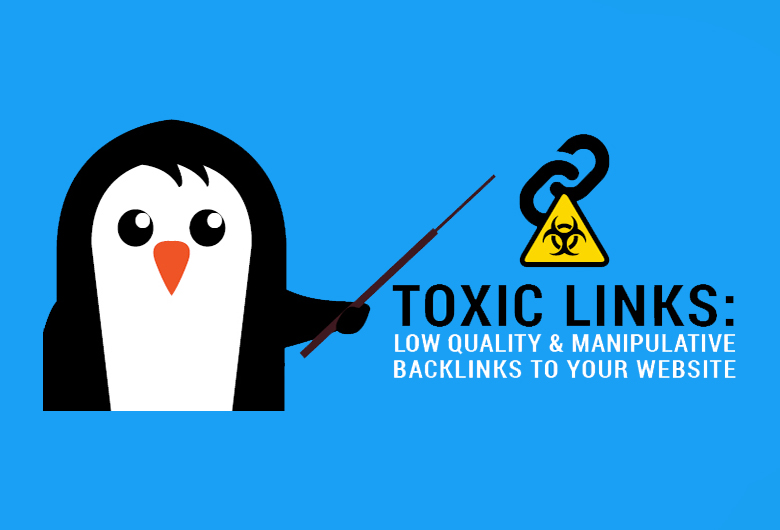Toxic backlinks are links from sites that can weaken your website’s SEO (Search Engine Optimisation of the ability for Google to show your site above other sites from your industry). Weaker SEO means fewer organic visitors. Fewer organic visitors can mean fewer leads for your sales team.
Toxic backlinks can happen organically (by simply creating a link to a site that google does not deem as safe), or they can be the result of previous less-than-white-hat backlinking efforts (such as using paid advertising to run a scam).
What Makes a Back Link Toxic?
There are many factors that can increase the toxicity of a back link. Here are the main reasons.
Mirror Pages
If you have multiple pages on your website, or different websites that have exactly the same or very similar text on the page, and all the different websites link to your site, then this is mirror paging and it is a toxic back link.
Low Domain Power
If your website links to too many websites that do not have a good Google Trust Score, this can effect your overall website SEO. The Trust Score is based on the number of backlinks from trusted sites pointing to the domain. The Domain Score is the importance of a domain and is calculated in a similar way to Google Page Rank. A low ratio means the site’s Domain Score may have been artificially inflated.
Poor Layout
That’s right, if your website is ugly or if the information on the site does not flow or make sense, this can cause toxic back links.
Discovering Toxic Backlinks
There are a number of available tools for discovering which of your backlinks are toxic. SEMrush, has a beta Back Link Audit tool.
What to do if you find Toxic Back Links?
Contact the webmaster of a site with one or more toxic back links to your site, and request removal of the links. This works most of the time and is generally recommended as first level of remediation.
If this doesn’t work, or if you cannot contact the webmaster, you can export a file of selected toxic back links and then submit the file to the Google Disavow Tool.
Google is cautionary about using the disavow tool and recommends “that you disavow back links only if you believe you have a considerable number of spammy, artificial, or low-quality links pointing to your site, and if you are confident that the links are causing issues for you.”

